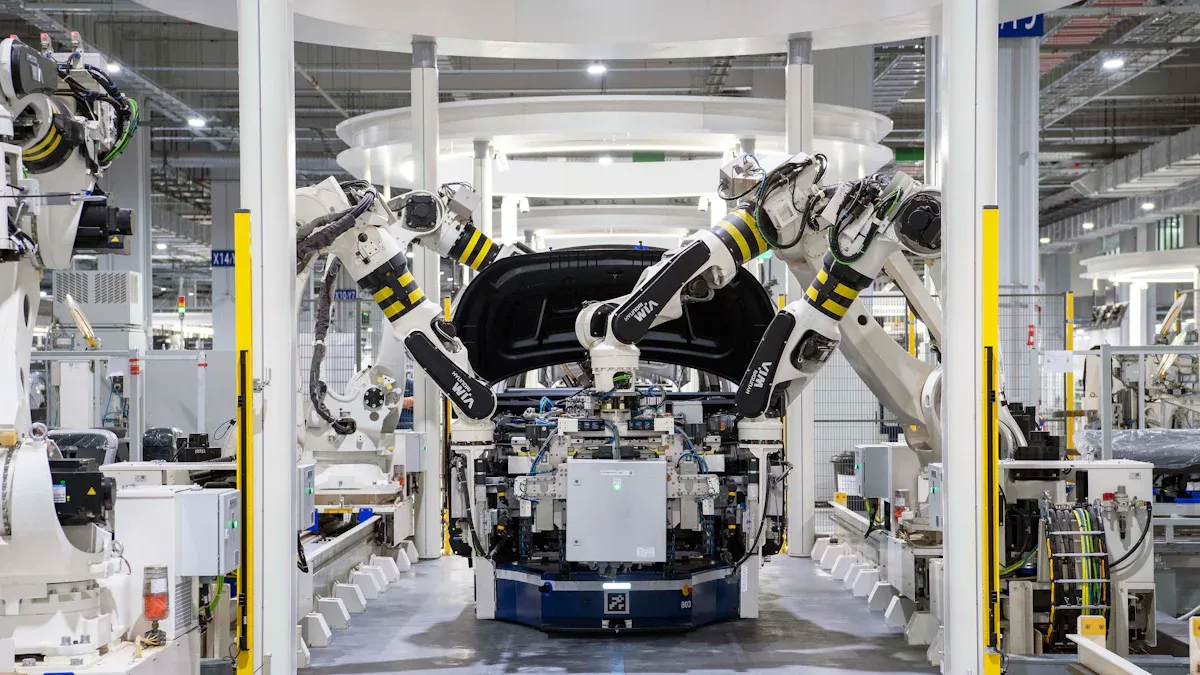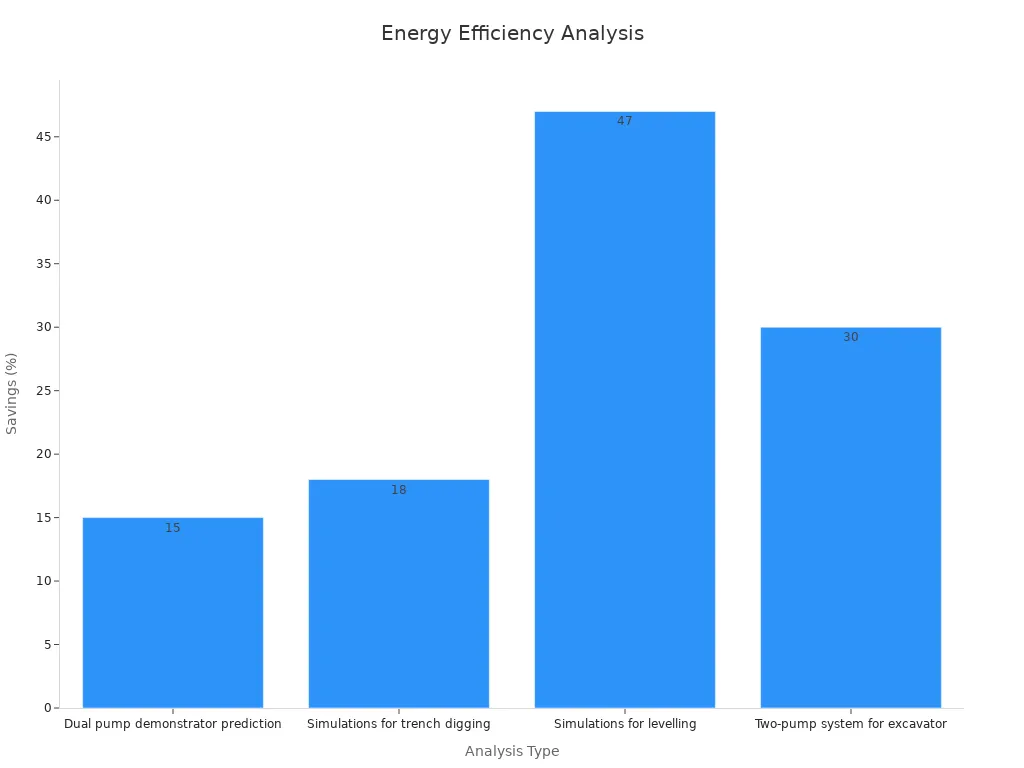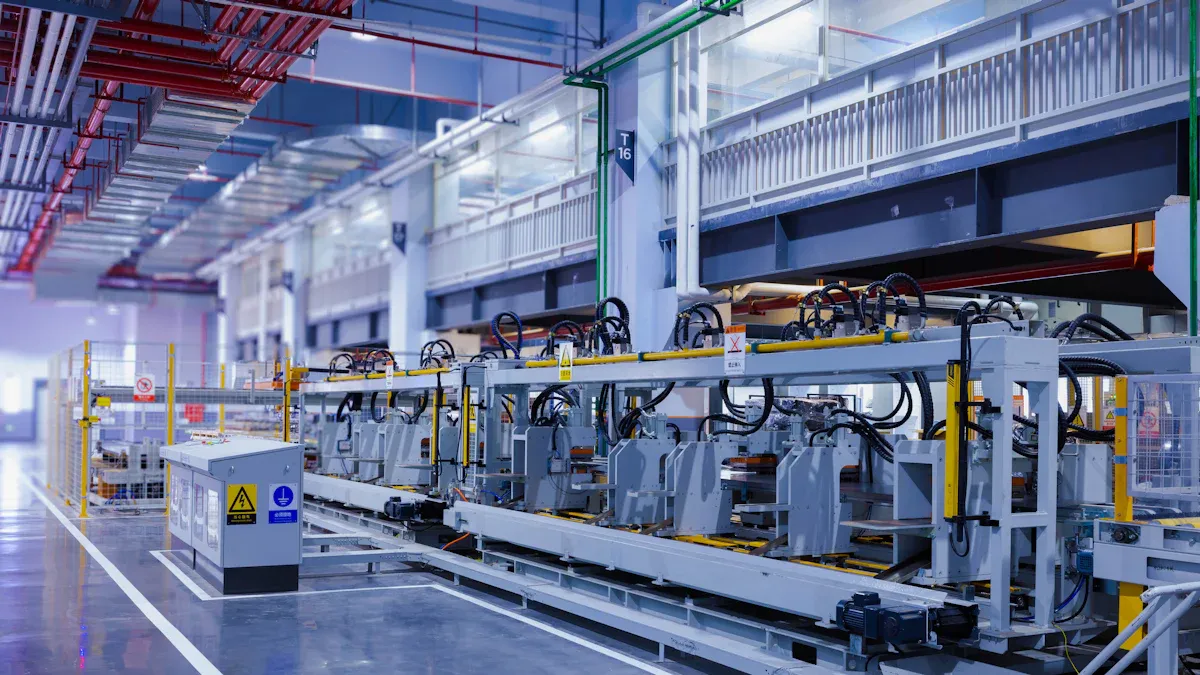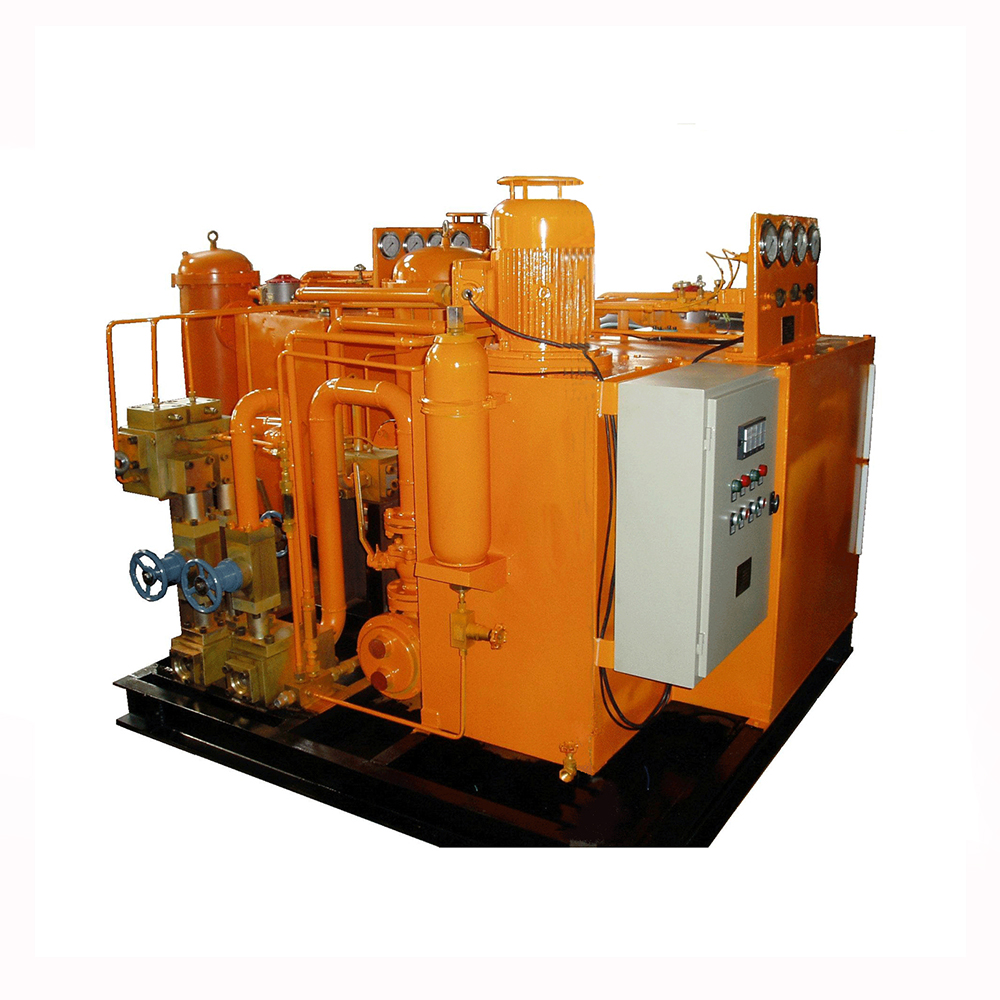
Hydraulic systems play a pivotal role in modern industrial automation by powering machinery with unmatched force and precision. The global Industrial Hydraulic Equipment Market, valued at USD 37.5 Billion in 2024, is projected to grow at a 5.7% CAGR, reaching USD 52.6 Billion by 2033. Intelligent hydraulic systems, featuring adaptive self-regulation and real-time monitoring, are redefining operational efficiency. Innovations like the hydraulic directional valve solenoid operated enhance control while minimizing safety risks. Collaborating with an OEM hydraulic system components supplier ensures access to cutting-edge solutions. Adopting a hydraulic system assembly ISO 9001 certified guarantees quality and reliability, solidifying a competitive edge in the evolving industrial landscape.
Key Takeaways
- Smart hydraulic systems save energy by using live data for better control and early problem detection.
- Adding IoT and smart sensors helps watch systems nonstop, making them more reliable and stopping sudden failures.
- Buying smart hydraulic systems can cost a lot at first, but they save money over time by working better and breaking down less.
Understanding Intelligent Hydraulic Systems
Definition and Key Features
An intelligent hydraulic system combines traditional hydraulic technology with advanced electronics, sensors, and software to deliver superior performance. These systems utilize real-time data to optimize operations, ensuring precision and efficiency. Key features include:
- Adaptive Control: Automatically adjusts parameters based on operational needs.
- Real-Time Monitoring: Tracks system performance continuously to detect anomalies.
- Predictive Maintenance: Uses data analytics to predict and prevent failures.
- Energy Efficiency: Reduces energy consumption through dynamic optimization.
By integrating these features, intelligent hydraulic systems enhance productivity while minimizing operational costs.
Differences Between Traditional and Intelligent Hydraulic Systems
Intelligent hydraulic systems outperform traditional systems in several critical areas. The following table highlights key differences:
| Feature | Traditional Hydraulic Systems | Intelligent Hydraulic Systems |
|---|---|---|
| Monitoring | Manual, periodic checks | Real-time, continuous monitoring |
| Energy Efficiency | Fixed operation parameters | Dynamic optimization based on real-time data |
| Maintenance | Reactive, schedule-based | Predictive, condition-based |
| Control | Basic on/off or analog control | Precise digital control with feedback |
| Connectivity | Isolated systems | Integrated with IoT and broader networks |
| Diagnostics | Limited, requires system shutdown | Advanced, ongoing diagnostics without disruption |
For example, traditional systems waste up to 40% of energy due to fixed-speed operations. In contrast, intelligent systems with variable-speed drives (VSD) achieve 30-50% energy savings in metal forming presses and 25-35% in mobile construction equipment. Predictive maintenance further reduces downtime by 45% and extends component life by 30-40%.
Applications in Industrial Automation
Intelligent hydraulic systems play a vital role in industrial automation across various sectors:
- Construction: Enable heavy lifting and precise positioning of materials.
- Aerospace: Support the manufacturing of aircraft components with high precision.
- Automotive: Enhance assembly line efficiency and accuracy.
- Manufacturing: Integrate seamlessly with robotic systems for optimized production.
Companies like MWES and E Tech Group have successfully implemented these systems, showcasing their effectiveness in automating processes and improving operational outcomes.
Benefits of Intelligent Hydraulic Systems
Energy Efficiency and Cost Savings
Intelligent hydraulic systems significantly reduce energy consumption, leading to substantial cost savings. These systems utilize advanced control methods, such as variable-speed drives and flow control, to optimize energy use. For instance, simulations for trench digging and leveling cycles demonstrate energy savings of 18% and 47%, respectively. Additionally, dual-pump systems for excavators achieve a 30% reduction in energy consumption compared to traditional load-sensing systems.
| Analysis Type | Energy Savings (%) | Context |
|---|---|---|
| Static model calculations | Up to 50% | Systems with two or four pumps |
| Simulations for trench digging | 18% | Energy savings in trench digging cycle |
| Simulations for leveling | 47% | Energy savings in leveling cycle |
| Two-pump system for excavator | 30% | Compared to load-sensing systems |

Enhanced Precision and Control
Advanced control techniques in intelligent hydraulic systems improve both speed and accuracy. Nonlinear PID control enhances system stability through superior error processing, while NN-MPC technology achieves high accuracy and energy savings of up to 15.35% under no-load conditions. A proposed control scheme has also demonstrated a remarkable improvement in positioning accuracy, reducing errors from 62 mm to within 10 mm.
| Technique | Improvement in Speed | Improvement in Accuracy | Energy Savings |
|---|---|---|---|
| NN-MPC | Superior | High | 15.35% (no load) |
| Control Method | Positioning Accuracy Improvement |
|---|---|
| Proposed Scheme | From 62 mm to within 10 mm |
Sustainability and Environmental Impact
Intelligent hydraulic systems contribute to sustainability by minimizing energy use and reducing waste. Moog's Electrohydrostatic Actuation Systems (EAS) eliminate the need for traditional Hydraulic Power Units, operating on a "power on demand" basis. This design reduces energy consumption and lowers the environmental impact. Additionally, these systems use 90% less oil, promoting sustainable operations with minimal waste.
- Operates only when hydraulic power is needed, reducing energy use.
- Reduces oil consumption by approximately 90%.
- Lowers the carbon footprint in global manufacturing processes.
Operational Reliability and Productivity
These systems enhance reliability and productivity through predictive maintenance and real-time monitoring. Predictive maintenance reduces downtime costs and improves equipment availability. For example, a 3% improvement in uptime can generate a $2 million impact on operations. Continuous monitoring also shifts maintenance from unplanned to planned, saving up to $2.5 million in continuous operations.
- Capacity Utilization: Predictive maintenance increases equipment availability.
- Overall Equipment Effectiveness (OEE): Real-time insights reduce machine failures.
- Downtime Reduction: A 3% improvement in uptime significantly impacts operations.
By integrating intelligent hydraulic systems, industries can achieve higher productivity and operational efficiency.
Integration of IoT, Sensors, and Electronics
Real-Time Monitoring and Data Analytics
The integration of IoT in hydraulic systems has revolutionized real-time monitoring and data analytics. IoT enables these systems to collect critical operational data, providing insights into energy consumption and functional status. This capability ensures optimal performance and maintenance signaling, reducing downtime and operational costs.
Monitoring during pump startups, for instance, minimizes pressure surges that could damage components. Data analysis reveals that type 2 startups lasting between 60 and 80 seconds achieve the lowest pressure peaks, ensuring optimal effectiveness. Overly cautious startups, however, may lead to hidden inefficiencies.
| Startup Type | Duration (seconds) | Pressure Peak | Effectiveness |
|---|---|---|---|
| Type 2 | 60-80 | Lowest | Optimal |
| Type 3 | >60 | Higher | Less Optimal |
By leveraging real-time analytics, industries can enhance system reliability and efficiency, ensuring seamless operations.
Role of Sensors in Enhancing System Intelligence
Sensors play a pivotal role in elevating the intelligence of hydraulic systems. AI-enabled sensors shift maintenance strategies from reactive to proactive, significantly reducing unexpected breakdowns. These sensors monitor critical metrics such as temperature, vibration, and pressure, providing a comprehensive view of equipment health.
Over time, advanced AI algorithms improve sensor accuracy and reliability. This continuous enhancement ensures that hydraulic systems operate at peak performance, minimizing downtime and extending component life. By integrating these sensors, industries can achieve smarter, more efficient operations.
Smarter Operations Through Electronics Integration
Advanced electronics integration has transformed hydraulic systems into smarter, more efficient solutions. Features like integrated control electronics and intelligent software functions enable real-time decision-making based on operating conditions.
| Component/Feature | Description |
|---|---|
| Integrated control electronics | Enhances system efficiency and reliability. |
| Intelligent software functions | Enables smart decision-making based on real-time operating conditions. |
| Soft-start functionality | Minimizes mechanical stress during pump startup, enhancing reliability. |
| Pump clog detection | Provides alerts for maintenance, preventing operational interruptions. |
These advancements not only improve operational performance but also reduce maintenance needs and energy consumption. By adopting such technologies, industries can ensure their hydraulic systems remain competitive in an evolving manufacturing landscape.
Overcoming Implementation Challenges
Addressing High Initial Costs
The adoption of intelligent hydraulic systems often involves significant upfront investment. However, the long-term financial benefits outweigh these initial costs. Companies have demonstrated success by leveraging predictive maintenance and automated service tracking to boost revenue streams.
- A hydraulic systems company increased aftermarket parts revenue by 22%, generating $3.4 million annually.
- A pressure valve manufacturer transitioned to predictive maintenance contracts, achieving a 38% revenue increase and $6.1 million in recurring cash flow.
- Real-time warranty tracking integration reduced warranty-related losses by 19%, improving financial stability.
These examples highlight how strategic investments in intelligent systems can deliver substantial returns, making the initial costs more manageable.
Simplifying System Integration
Integrating intelligent hydraulic systems into existing operations requires careful planning. Stability issues, such as unstable speed control in excavators, can lead to excessive fuel consumption and vibrations. Advanced control methods, like nonlinear PID control, address these challenges by enhancing system stability. This ensures seamless integration while improving operational efficiency. Simplified integration processes also reduce downtime, enabling industries to maintain productivity during the transition.
Ensuring Maintenance and Reliability
Predictive maintenance strategies enhance system reliability by identifying potential failures early. Statistical studies reveal significant improvements in maintenance operations:
| Evidence Type | Result Description | Impact on Maintenance Operations |
|---|---|---|
| Reduced Downtime | Unplanned downtime reduced by 40% due to early identification of potential failures | Increased production and improved customer satisfaction |
| Improved Plant Reliability | 30% improvement in asset reliability, reducing critical failures and outages | Increased plant availability and less disruption |
| Optimal Maintenance Plan | Maintenance activities optimized based on predictive models | Minimized costs and improved resource allocation |
Machine learning algorithms further optimize maintenance timing, ensuring operational efficiency and extending machine life.
Workforce Training and Skill Development
The rapid evolution of intelligent hydraulic systems necessitates continuous workforce training. Employees must acquire new skills to operate and maintain these advanced systems effectively. Organizations that prioritize upskilling and reskilling ensure their teams remain competitive in a dynamic job market. By fostering a culture of continuous learning, industries can bridge the skill gap and maximize the potential of intelligent hydraulic technologies.
Future Trends in Hydraulic Systems

Hybrid Hydraulic Systems for Versatility
Hybrid hydraulic systems are emerging as a game-changer in industrial applications. By combining traditional hydraulics with advanced energy recovery technologies, these systems deliver unmatched versatility and efficiency. For instance, the Caterpillar 336EH hydraulic hybrid excavator demonstrates fuel savings of up to 25% across various applications. In side-by-side comparisons, fuel efficiency improved by 20% to 48%, depending on the task. These advancements not only reduce operational costs but also enhance productivity by 7%, showcasing the potential of hybrid systems to revolutionize industries.
Energy-Efficient Technologies and Smart Pumps
Energy-efficient technologies are reshaping the hydraulic system landscape. Innovations such as variable-speed pump drives and energy recovery systems optimize fluid power applications. Reports highlight the adoption of variable displacement pumps, which adjust fluid flow based on demand, minimizing energy waste. For example, the hydraulic pumps market is projected to reach $13.69 billion by 2030, driven by these energy-efficient designs. These advancements align with the industry's push toward sustainability and cost-effectiveness.
3D Printing in Hydraulic Component Manufacturing
3D printing is transforming hydraulic component manufacturing by enhancing efficiency and reducing costs. Optimized channel designs have increased flow capacity by 20%, while redesigned valves weigh 60% less. Additionally, 3D-printed manifolds are half the size and 75% lighter than traditional versions. These innovations simplify manufacturing, reduce leakage by 20%, and improve overall system performance, making 3D printing a cornerstone of future hydraulic advancements.
Predictive Maintenance and AI Integration
Predictive maintenance, powered by AI, is revolutionizing hydraulic system reliability. Companies like Bosch Rexroth employ AI-based anomaly detection to identify potential failures early. This approach has reduced downtime and improved equipment effectiveness. General Electric's use of machine learning algorithms has cut maintenance costs by 10% and increased uptime by 20%. These advancements ensure hydraulic systems operate efficiently, minimizing disruptions and maximizing productivity.
Intelligent hydraulic systems have revolutionized industrial automation by enhancing energy efficiency, precision, and sustainability. Their integration with advanced technologies like IoT and 5G ensures real-time data communication and smarter operations.
| Aspect | Description |
|---|---|
| Energy Efficiency | Rising demand for efficient drive systems aligns with environmental concerns and resource scarcity. |
| Environmental Challenges | Stricter regulations emphasize sustainable production and biodegradable oils. |
| Safety Requirements | Compliance with global safety standards ensures operational reliability. |
| Digital Information Procurement | IoT and 5G enable real-time data sharing, fostering data-driven business models. |
| Future Outlook | Hydraulic systems will evolve with Industry 4.0, focusing on energy efficiency and advanced technology integration. |
These advancements position intelligent hydraulics as a cornerstone of future industrial innovation.
FAQ
What industries benefit the most from intelligent hydraulic systems?
Industries like construction, aerospace, automotive, and manufacturing gain significant advantages. These systems enhance precision, reduce energy consumption, and improve operational efficiency across various applications.
How do intelligent hydraulic systems improve energy efficiency?
They optimize energy use through variable-speed drives and real-time monitoring. This reduces waste and ensures operations consume only the required energy.
Are intelligent hydraulic systems compatible with existing equipment?
Yes, they integrate seamlessly with most existing systems. Advanced control methods and modular designs simplify the transition, minimizing downtime and operational disruptions.
Tip: Consult with a trusted hydraulic system supplier to ensure compatibility and optimal performance during integration.
Post time: Apr-10-2025

